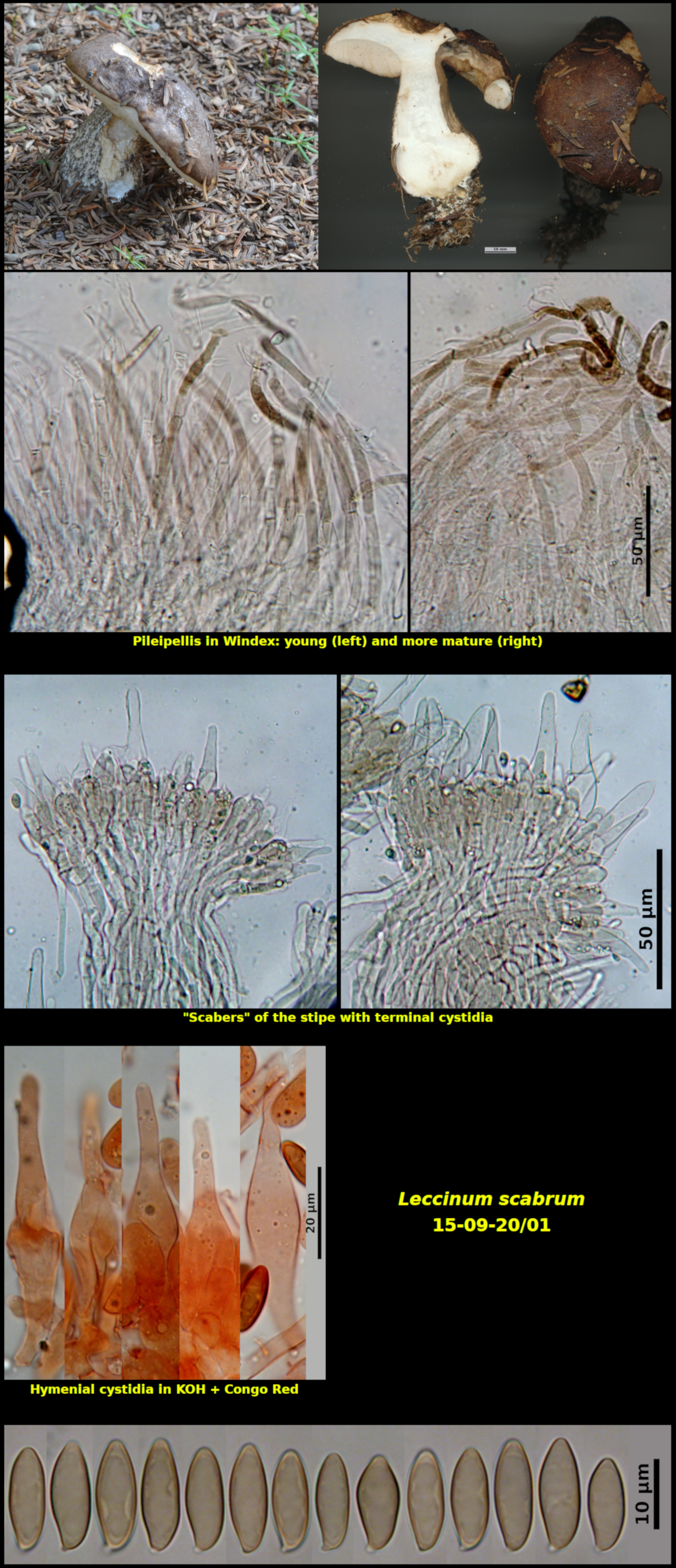Fleshy Fungi of New Brunswick >>
Leccinum scabrum
Leccinum scabrum (Bull.) Gray

Solitary in needle litter at the side of a gravel driveway, associated with nearby individuals of Abies balsamea and a more distant Betula papyrifera, Little Lepreau, New Brunswick (15-09-20/01).
Pileus not seen when young, convex, without an overhanging margin, dry, probably smooth at first but becoming minutely rugulose by the disruption of the pileipellis during expansion, otherwise glabrous, dark reddish brown (HSV00:80:20-30), 63-66 mm in diameter. Stipe clavate, subbulbous at the base, densely scabrous throughout with black scales, white below the scales, dry, 40-45 x 13-14 mm. Tubes very pale yellow (HSV50:05:100), paler yellow to nearly white at the pore mouths, with some yellow-brown stains in age or perhaps where bruised, adnexed, with maximum length about 10 mm, about 2 per mm. Veil lacking. Flesh white in the pileus and stipe, with some slight reddening in the stipe after exposure to air for 30 minutes, with a pleasant but nondescript mushroom odour, lacking a distinctive taste.
Basidiospores light yellow brown in (weak) spore print, boletoid, usually with a distinct suprahilar depression, smooth, 12.2-17.2 x 4.9-6.2 μm, Q = 2.19-3.11 (average[62]: 14.6 x 5.6 μm, Q = 2.62. Hymenial cystidia scattered, not abundant, ventricose to sublageniform, about 50-70 x 11 μm. Basidia broadly clavate, 4-spored, without a basal clamp connection. Pileipellis a dense trichoderm of nearly parallel upright cylindrical hyphae, becoming less compact in age, without swollen elements. Scales of the stipe bearing variously sized cystidia at their apices, with cystidia mostly ventricose to lageniform.
Leccinum scabrum is an associate of birch. It is recognized by its brown pileus that lacks an overhanging margin, by its white stipe densely covered with dark brown to black squamules ("scabers") and by its cut flesh that remains white and does not change colour as does that of many other Leccinum species. The field notes for Collection 15-09-20/01 record a slight reddening of the flesh after a half hour but this was very inconspicuous. The large basidiospores may also help to distinguish it from other species of this rather difficult genus.